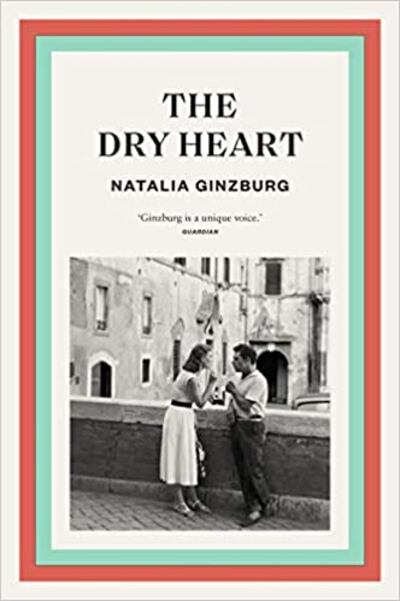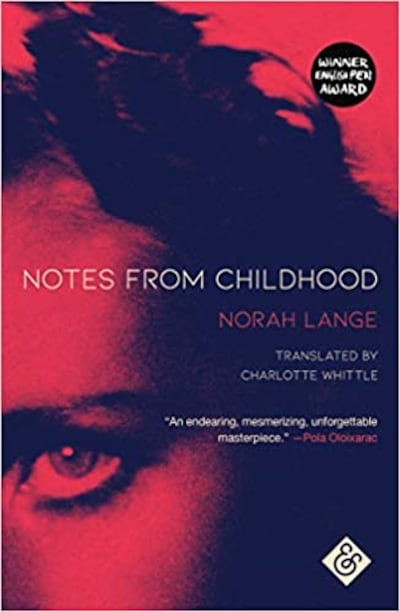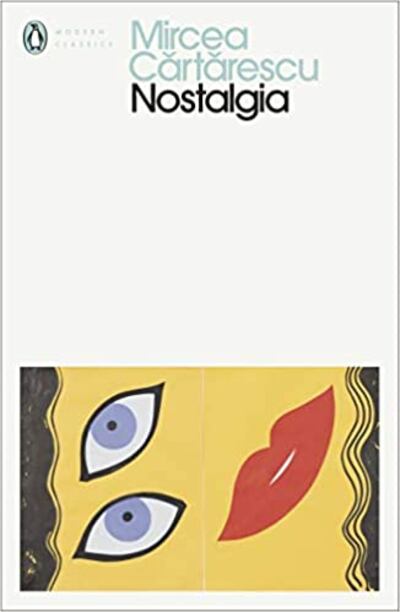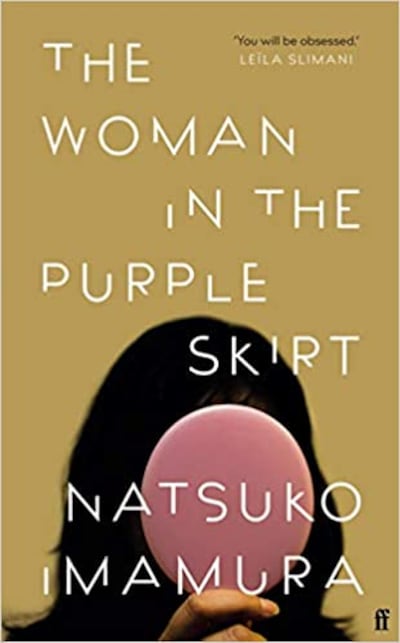This month’s translation column features stunning reissues and rediscovered writers from Italy, Argentina, and Romania, plus a satire from Slovenia, a multi-layered narrative from Brazil, and a dark comedy from Japan.
Natalia Ginzburg has undergone a much-deserved reassessment in recent years, largely due to the rerelease of much of her work by Daunt Books. The Italian writer and political activist, who died in 1991, was equally at home with fiction as with essay form. Her marvellously compact prose is beautifully showcased in the novella The Dry Heart (Daunt Books, 120pp, £8.99), first published in 1947 and translated into English in 1952 by Frances Frenaye. To read this newly reissued translation some 60 years after its initial publication is to encounter not a stuffy period piece but rather something fresh and clear.

A young woman, who describes herself as “weak and unarmed with imagination”, abruptly shoots the older husband to whom she has been married for the past four years. Throughout the course of The Dry Heart she meticulously gives her account of what has led to this moment, from her chance first meeting with Alberto when she was a lonely teacher living in a gloomy boarding house, to his sporadic attention and overall indifference, which does not cease when they eventually marry.
The tragedy they experience as a couple leads to the young woman’s unravelling, in an unadorned tale, tragic and unsentimental.
"Ever since I was very little, I have liked to watch people closely." The same unnerving and mysterious style that inhabited Norah Lange's novel People in the Room (first published in 1950 in Spanish and newly in English translation in 2018) pulsates throughout Notes from Childhood (And Other Stories, 160pp, £10, translated by Charlotte Whittle), Lange's fragmented collection of memories of growing up in early 20th-century Argentina.

Originally published in 1937, Notes from Childhood continues to be her most widely read work in Argentina. The intense child’s-eye observations of life as part of a large family – first in Mendoza, then, after her explorer father’s sudden death in 1915 when she was 10, in Buenos Aires, where her youngest sister Esthercita also died – are stark, dreamy and often morbid observations that read like windows into the soul. As translator Charlotte Whittle, to whom the restoration of Lange’s work has been a project of deep commitment, explains: “Lange developed a voice that plumbed the depths of domestic life.”
Linear autobiography is eschewed. Eccentric and obsessive, Lange reveals herself to be a born surrealist, examining and interpreting situations and people from elliptical angles, such as this view of her mother preparing for a day’s riding with her father:
“On one side of the horse, we saw the whole length of her, the black brim of her hat concealing her face. We saw only a single lived hand of the other, yes her profile was as sharp as if she had suddenly drawn alongside a lamp.”

"Literature is teratology" asserts one narrator of Mircea Cartarescu's sprawling, hypnotic five-part sequence from 1989, Nostalgia (Penguin Classics, 352pp, £9.99, translated by Julian Semilian). Set in communist-era Bucharest, this rough beast of a work – censored on publication in Ceaucescu's Romania – has taken a frustratingly long time to be translated into English. This was remedied in 2005, and Penguin Classics has now accorded the book canonical status.
Ambitious and headache-inducing, visionary and tormented, a challenge that Semilian meets with aplomb, Nostalgia maniacally mixes history, autobiography and magic realism. There are hints of Bulgakov as well as an aura of Donald Cammell’s and Nicolas Roeg’s cult 1970 film Performance; a whirlwind of seedy glamour and despair that is itself a reflection of a nightmarish totalitarian state, as well as a scintillatingly detailed portrait of adolescence and retrospective longing.
A girl has “violet hair”; the autumn air is the “colour of coffee”. Ominous apartment buildings and scuttling cockroaches intermingle with visually dazzling signs and portents; the mundanity and pain of everyday life is all-encompassing, as in this sequence from the chapter REM:
“That summer, as I told, you, a comet appeared in the skies. I couldn’t unglue myself from the skylight. I stared at it till I couldn’t stare any longer, following its six tails fanning out into the east. Toward the end of June, Mother got very sick, perforated a duodenal ulcer, and the ambulance came at night to take her away.”

Slovene literary editor Mitja Cander's debut fiction, Blind Man (Istros Books, 174pp, £9.99, translated by Rawley Grau), is a satire that owes a rather obvious debt to the great José Saramago's Blindness. A visually impaired book editor and critic has, throughout his life, mostly denied the reality of his disability. When he takes up an opportunity to move high into the political sphere (his sole previous experience having been as president of his school's socialist youth group), embracing all the power and corruption that entails, his blindness turns metaphorical and his family life begins to disintegrate.
Cander is strong on atmosphere and wit – there is a grim amusement in the central character’s somewhat gullible hyperactivity – but short on any real depth, and the prose appears diluted and rushed. The over-explanatory translator’s introduction, which includes clarifications on everything from Slovenia’s recent past (until 1991 the country was part of communist-controlled former Yugoslavia) to literary references and types of wine, is, while interesting, mainly unnecessary.
Pointedly directed towards historical propaganda and fake news (the novel was first published in Slovenia in 2019), Blind Man is a parable on a well-worn theme.

Brazilian author Emilio Fraia's Sevastopol (Lolli Editions, 128pp, £12.99, translated by Zoe Perry) consists of three separate stories based loosely on Tolstoy's Sevastopol Sketches, which were written out of his experience at the Siege of Sevastopol (1854-55) during the Crimean War. Versions of some of these sketches would later find their way into War and Peace. Fraia emulates Tolstoy's structure – December, May and August – for each individual case study of three people at a crisis point in their lives. The result is graceful and melancholic, enhanced by Zoe Perry's subtle translation.
A young woman has a terrible accident in December while mountain climbing in Nepal; the reality of her shifting perspective, her last memories of life without disability, and the relationship she has or may have had with an Italian photographer who documents the incident turn over like leaves in the bottom of a stagnant pond, reluctant to show what is underneath.
Similarly, in May, a Brazilian-Peruvian man disappears from a run-down inn hidden among the eucalyptus of the Brazilian countryside. What is his backstory, and what has happened to him? “Things take on a life of their own ... objects blend with people, over time they come to life,” ruminates the inn’s elderly owner.
The Sevastopol siege itself becomes the focal point in August. A young playwright in São Paulo attempts to stage a production about the city of Sevastopol and the life of a fictional Russian painter who depicted the siege, “always breathing the leaden air of war – he was up to his neck in it – but war, the war itself, never appeared in his paintings”.
These stories within stories are impeccably realised, and this is another ground-breaking publication from newish Lolli Editions, a small press currently making waves on the International Booker shortlist.

Natsuko Imamura's The Woman in the Purple Skirt (Faber & Faber, 224pp, £12.99, translated by Lucy North) is part psychological thriller, part study of endemic loneliness. Its narrator, who identifies herself as the Woman in the Yellow Cardigan, obsesses over a woman in a purple skirt who she sees sitting on the same bench every day eating a cream bun. The woman appears entirely oblivious to the people around her. She looks young, but on closer inspection is much older. She resembles the narrator's sister, from whom she has long been estranged – or – no, she doesn't.
What the narrator wants from the woman is unclear. She leaves magazines on the bench with job listings highlighted and sachets of fragrant shampoo. When the woman in the purple skirt finally gets one of the circled jobs, she follows her to work each day.
It’s a clever, wry and disturbing piece of fiction. And although the identity of the Woman in the Purple Skirt is fairly easy to guess, it is, nevertheless, a sharp examination of personality and persona and the small terrors of everyday life.



















